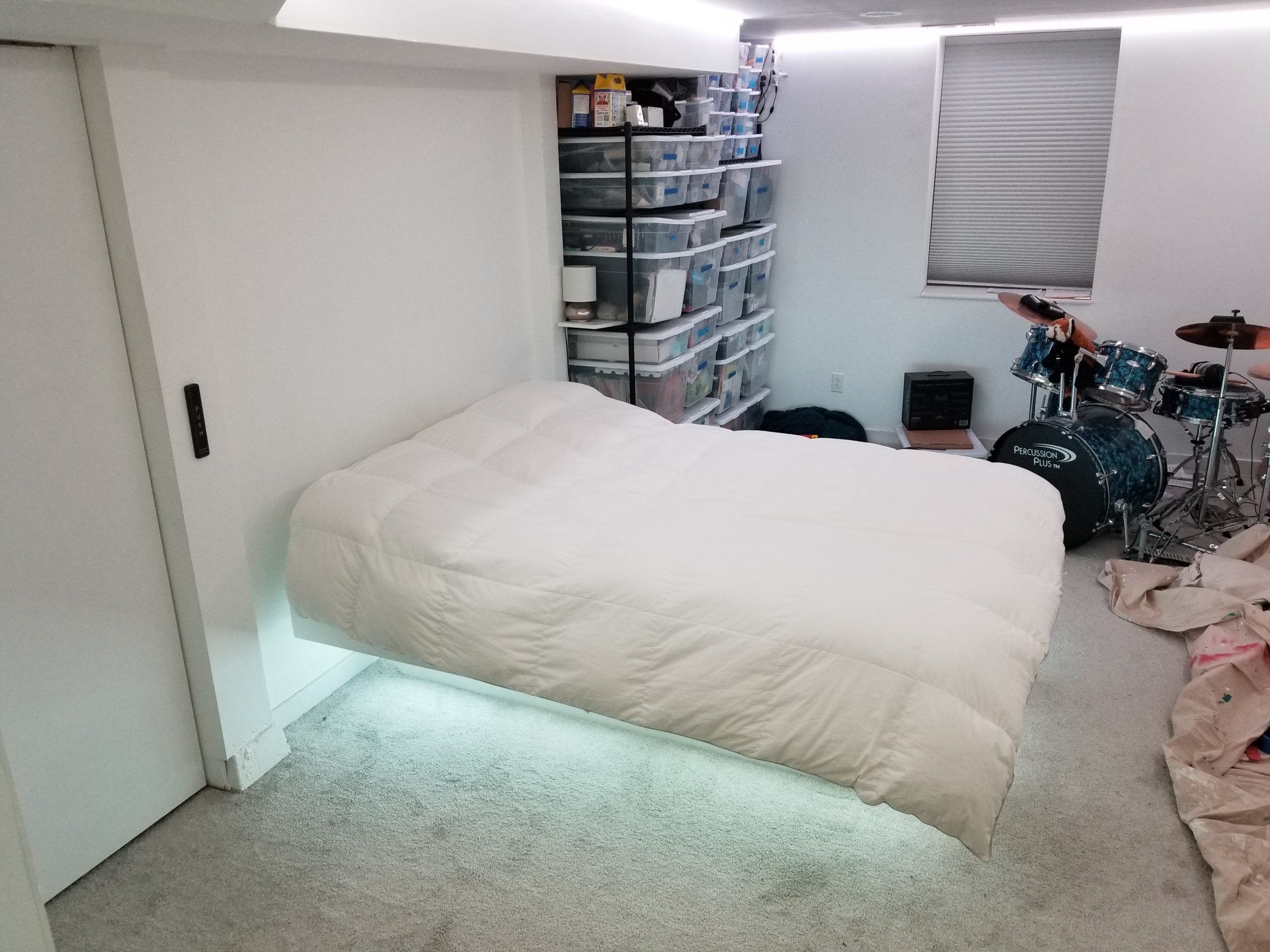03. A Space-themed Murphy Bed project

If you’re looking to create a space-style murphy bed, here’s a detailed guide on how to do it.
First, you’ll need to create a CAD model of the bed and sled. The bed will be made of 1/2″ plywood with 4″ high walls, and the sled will consist of 4 sheets of 1/2″ plywood stacked together. Cut out all of the pieces using a CNC panel router for accurate and smooth edges.
Next, sand and build the bed portion using screws and wood glue. Use 1 1/4″ wood screws and countersink the holes deep enough to use wood filler to cover them up later. Paint all of the parts with oil-based paint, using space heaters to get it up to an acceptable temperature.
For the acrylic, use translucent acrylic with a 1/4″ inset for extra space. Cut it out using a laser cutter. Screw the bed onto the sled, leaving the countersunk holes exposed in case the two need to be disassembled for transportation.
For the lighting, use 12V RGB light strips and two WiFi controllers. Wire the power supply to deliver to both controllers and put them in a spare project box to mount to the sled. Route the light strips through the sled using 1/2″ holes and staples to hold them in place. Use translucent plastic in the center of the horizontal pieces to support the acrylic pieces. Be careful not to nick the strip or risk shorting a section of it.
Overall, this project should take a couple of weeks and cost around $450. Follow these instructions closely, and you’ll have a unique and stylish space-themed murphy bed to enjoy!
02. A Curvy floating shelf Idea
To create the prototype, you bought birch veneer (wood-backed) from a local plywood supplier and glued it up with a vacuum bag setup and Titebond cold press glue. The vacuum helped to apply around 4000 lbs. of pressure to the layers, creating a strong shape. You then buffed on paste wax with a scrubby pad and hung it on the wall.
To improve the structural support of the shelves, you might consider adding curves or twists at each side of every shelf or experimenting with other support ideas, such as using L-shaped brackets.
In terms of aesthetics, it’s best to stick with the dowels or other supports that don’t throw off the look of the shelves. If you’re still having trouble with the brackets, you can try making half-clamshells with parts of the shape.
This will create a pocket to hide your dowels and give the appearance of a floating shelf. To match the grain and play with perspective, make sure to stack the pieces in the right way.